As several approaches to decandling red and black pine involve pulling needles, I thought I’d include a few tips about how to properly pluck pine needles.
Why do we pull pine needles?
- To reduce food production. Decreasing the number of needles on a tree slows food production and reduces vigor. It also encourages the tree to push new buds in its attempt to increase food production.
- To increase the light and air available to remaining foliage and branches. Sunlight can help stimulate new buds. Good light and circulation can discourage some insects from preying on pines.
- To balance vigor. Some decandling techniques require leaving different numbers of needles in different areas (more on this soon). Reducing food production in strong areas by removing needles can help balance vigor.
Pulling needles also facilitates wiring, but that’s not usually not a motivation for the practice.
How do we pull pine needles?
We pull pine needles by grabbing the base of a needle pair with tweezers and pulling. This is typically done by pulling needles forward, in the direction the needles grow, to avoid tearing the skin of the branch. Older needles tend to separate easier than younger needles so care must be taken when removing healthy, vigorous needles.

Preparing to pluck a pair of needles
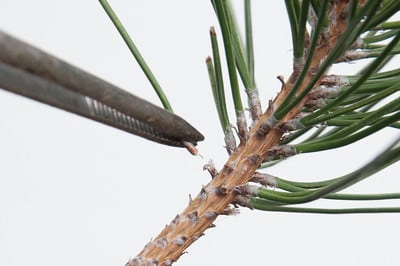
Needles and fascicle removed
If the tweezers grab hold of needles above the fascicle, it’s easy to leave it behind.
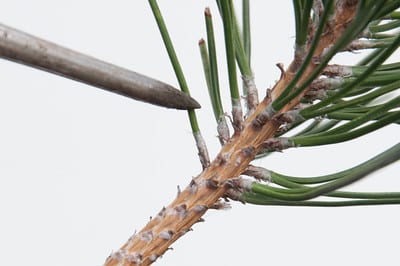
Grabbing the needles above the fascicle
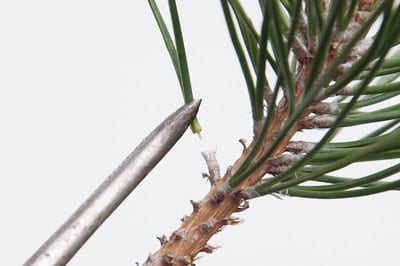
Needles removed, fascicle left behind
If this happens, simply remove the fascicle with another pluck.
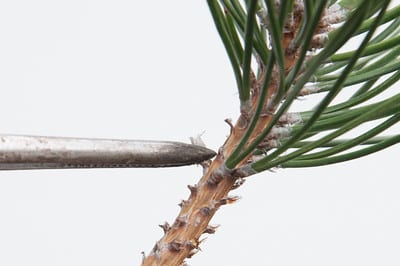
Grabbing the fascicle

Fascicle removed
Bracts, the protective sheaths that look like flat leaves, can also be removed. By keeping branches free of bracts and fascicles, wiring is simplified and our work looks clean.
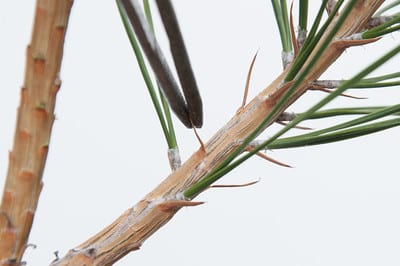
Removing a bract
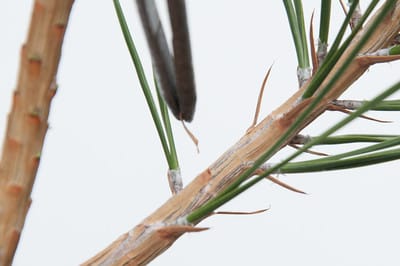
Bract removed
Sometimes bracts emerge at the base of needle pairs. These bracts can be removed with needles or separately.

Needle pair with bract

Needles and bract removed together
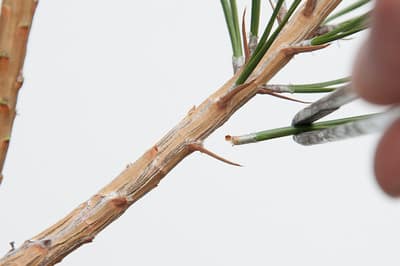
Needles removed, bract remains
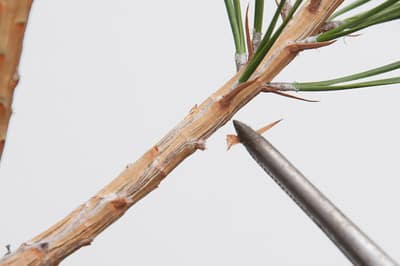
Remaining bract removed
Pulling back on pine needles isn’t recommended as it can tear the skin of the branch. This is especially true for younger needles. Avoid this by pulling needles forward.
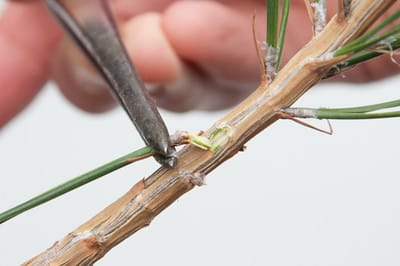
Pulling a needle pair backward opens a tear in the branch

Needle and a bit of branch removed
No need for cut-paste if a bit of skin comes off with the needle, but do try to avoid this as numerous openings can weaken the tree.
Subscribe to Bonsai Tonight
New Posts Delivered Every Tuesday and Friday
Doug DT says
I read and was told to leave the fascicle as there was a microscopic bud or bud forming tissue there and that removing them removed the possibility of buds emerging. Another myth dispatched?
Jonas Dupuich says
Hi Doug – Yes, leaving the fascicle in place preserves the possibility of a needle bud and removing the fascicle dashes any hope of this bud developing. In general, I pluck needle and fascicle together. Occasionally, when there is a long stretch of needles with no side buds, I’ll cut the needles above the fascicles and later cut to this point to force needle buds to develop. I’ll see if I can find a good example of this and try to say more in a future post.
Mac says
Jonas, You continue to provide clear and precise instructions to care for two needle pines. Nothing this clear and detailed has been done, that I know of, before in US bonsai literature. Thank you!
Will you do the same type of information for white pines at some point in the future? Tho things like pulling needles and cutting candles is the same, the when, how and result is different.
Jonas Dupuich says
Thanks Mac! I’ll share what I can about white pine too when I have the chance, though this will be a ways out simply because I have fewer white pines than black.
bpalme says
HI, THanks for the info. I’m new to bonsai and have an Italian stone pine. Do these techniques apply to most pines?
Jonas Dupuich says
These techniques don’t apply to all pines – they work for black and red pines, and for the most part, Scots pines. I haven’t worked with Italian stone pines so I’m not sure about that variety.
Mark @ Bonsai Dojo says
Thanks for the info! This is a great guide!
I cant tell you how many times I’ve stuck my fingers trying to pull needles with my nails.
I have seen an increase in budding now that some needles have been pulled (after a few weeks they started to appear), mine is only a young tree so good to get a bit of extra branch growth in there.